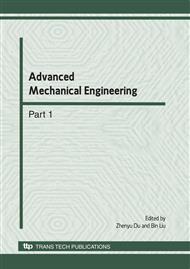[1]
Herui Cui, Xiuli Song. An empirical research on short term power load forecasting based on chaos theory[C]. 2008 International Seminar on Future Information Technology and Management Engineering, 2008: 394-397.
DOI: 10.1109/fitme.2008.21
Google Scholar
[2]
Chuanwen Jiang, Tao Li. Forecasting method study on chaotic load series with high embedded dimension[J]. Energy Conversion and Management, 2005, 46(5): 667-676.
DOI: 10.1016/j.enconman.2004.06.004
Google Scholar
[3]
Xusheng Yang, Yong You, Wanxing Sheng, et al. A hybrid method and its application for power system[J]. Journal of Universal Computer Science, 2009, 15(13): 2726-2745.
Google Scholar
[4]
T Iokibe, Y Fujimoto, M Kanke, et al. Short-term prediction of chaotic time series by local fuzzy reconstruction method[J]. J. Intell. Fuzzy Syst. 1997, 5(1): 3-21.
DOI: 10.3233/ifs-1997-5102
Google Scholar
[5]
J Ding, Y Sun. Short-term load forecasting using chaotic learning algorithm for neural network[J]. Autom. Electric Power Syst. , 2000, 24 (1): 32-35.
Google Scholar
[6]
Hurst H E. Long-term storage capacity of reservoirs[J]. Transactions of the American Society of Civil Engineering, 1951, 116: 770-799.
DOI: 10.1061/taceat.0006518
Google Scholar
[7]
Peters E. Fracatal structure in the capital market[J]. Financial Analysts Journal, 1989, 52(3): 131-137.
Google Scholar
[8]
Barnsley M F. Fractals everywhere[M]. New York: Academic Press Inc., (1988).
Google Scholar
[9]
Alan Wolf, Jack B Swift, Harry L swinney, et al. Detemining lyapunov exponents from a time series[J]. Physica D, 1985, 16(3): 285-317.
DOI: 10.1016/0167-2789(85)90011-9
Google Scholar
[10]
Rosenstein M T, Collins J J, Deluca C J. A practical method for calculating largest Lyapunov exponents from small data sets[J]. Physica D, 1993, 65(1): 117-134.
DOI: 10.1016/0167-2789(93)90009-p
Google Scholar
[11]
Grassberger P , Procaccia I. Measuring the strangeness of strange attractors[J]. Physica D, 1983, 9: 189-(2081).
DOI: 10.1016/0167-2789(83)90298-1
Google Scholar
[12]
Packard N H, Crutchfisld J P, Farmer J D, et al. Geometry from a time series[J]. Physical Review Letters, 1980, 45: 712-716.
Google Scholar
[13]
Takens F. Determining strange attractors in turbulence[J]. Lecture Notes in Mathmematics. Berlin: Springer, 1981, 898: 366-381.
Google Scholar
[14]
Andrew M F, Harry L swinney. Independent coordinates for strange attractors from mutual information[J]. Physical Review A, 1986, 33(2): 1134-1140.
DOI: 10.1103/physreva.33.1134
Google Scholar
[15]
Grassberger P, Procaccia I. Characterization of strange attractors[J]. Phys. Rev. Lett, 1983, 50(5): 346-349.
DOI: 10.1103/physrevlett.50.346
Google Scholar


